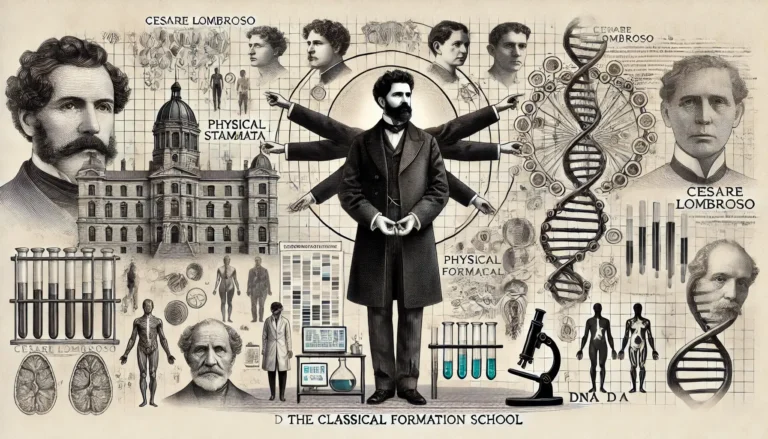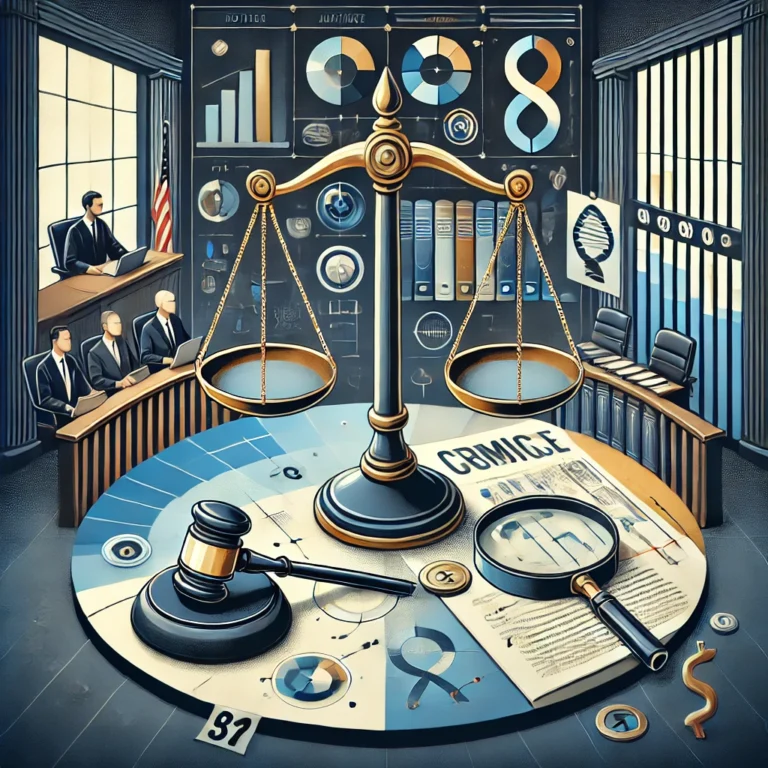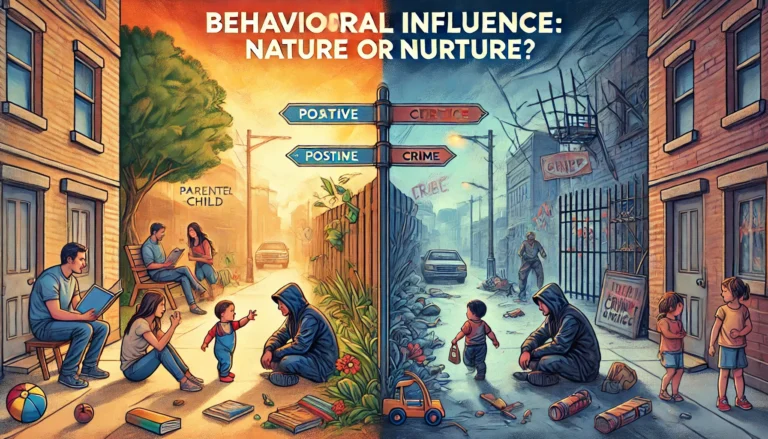Potential Criminals in Criminology: Understanding Risk Factors and Prevention
Introduction
Criminology is a field dedicated to understanding the causes and consequences of criminal behavior. A critical aspect of this study is identifying potential criminals—individuals who may be at higher risk of engaging in criminal activities due to various biological, psychological, and social factors. The concept of potential criminals is highly debated, raising ethical concerns about profiling, predictive policing, and human rights. This article explores the risk factors associated with criminal behavior, methods for identifying individuals at risk, and preventive strategies to mitigate crime before it occurs.
Defining Potential Criminals
The term “potential criminals” refers to individuals who exhibit traits, behaviors, or circumstances that statistically correlate with an increased likelihood of committing crimes. However, it is essential to recognize that having risk factors does not equate to inevitable criminality. Instead, criminologists analyze these indicators to understand crime patterns and develop intervention strategies.
Biological and Psychological Factors
1. Genetic Influences
Studies have suggested a link between genetics and criminal behavior. One of the most debated genetic factors is the MAOA gene, also known as the “warrior gene,” which has been associated with aggressive and impulsive behavior. Individuals with a specific variant of this gene (MAOA-L) may have a predisposition toward violence, especially when exposed to adverse environmental conditions.
2. Neurological and Cognitive Traits
Neurological deficits, including abnormalities in the prefrontal cortex and amygdala, have been linked to impulsivity and poor decision-making, common traits in violent offenders. Low impulse control, high sensation-seeking behavior, and lack of empathy are psychological traits often found in individuals prone to criminal actions.
3. Mental Health Disorders
Certain mental health conditions, such as antisocial personality disorder (ASPD), borderline personality disorder (BPD), and psychopathy, have been associated with an increased risk of criminal activity. While most individuals with mental disorders are not violent, untreated severe conditions may contribute to criminal tendencies.
Social and Environmental Factors
1. Family Background
- Parental criminality: Children of incarcerated parents have a higher likelihood of engaging in crime due to learned behaviors and social normalization of criminal activity.
- Child abuse and neglect: Exposure to violence or neglect in childhood significantly increases the risk of future criminal behavior.
- Lack of parental supervision: Poor parental monitoring is a common risk factor for juvenile delinquency.
2. Socioeconomic Conditions
- Poverty and unemployment: Financial instability can drive individuals toward crime as a means of survival.
- Lack of education: Lower levels of education correlate with higher crime rates, as individuals with fewer opportunities may resort to illegal activities.
- Neighborhood environment: High-crime neighborhoods tend to reinforce criminal behavior through peer influence and exposure to violence.
3. Peer Influence and Gang Affiliation
Association with delinquent peers or gang involvement significantly increases the likelihood of criminal activity. Adolescents who seek social acceptance may adopt criminal behaviors if surrounded by individuals engaged in unlawful activities.

Identifying At-Risk Individuals
1. Risk Assessment Tools
Criminologists and law enforcement agencies use risk assessment models to evaluate individuals for potential criminal behavior. These models analyze personal history, psychological assessments, and environmental conditions to determine the probability of future offenses.
2. Behavioral Warning Signs
Common behavioral indicators that may suggest a higher risk of criminal activity include:
- Persistent aggression and violent tendencies
- Repeated involvement in minor offenses
- Lack of remorse or empathy
- History of school suspensions or expulsions
- Substance abuse
3. Predictive Policing and Ethical Concerns
Predictive policing uses artificial intelligence (AI) and data analytics to identify crime hotspots and individuals at risk. While effective in crime prevention, it raises ethical concerns about discrimination, privacy violations, and potential wrongful accusations.
Crime Prevention Strategies
1. Early Intervention Programs
Programs targeting at-risk youth, such as mentoring, family support initiatives, and community engagement activities, can help steer individuals away from criminal paths.
2. Education and Employment Opportunities
Providing access to quality education and stable employment reduces the socioeconomic factors that contribute to criminal activity.
3. Mental Health Support and Rehabilitation
Ensuring mental health care for individuals with psychological disorders can prevent criminal tendencies by addressing underlying conditions.
4. Strengthening Community Policing
Encouraging collaboration between law enforcement and communities fosters trust and reduces crime rates by promoting proactive engagement rather than reactive enforcement.

Conclusion
The study of potential criminals in criminology is essential for understanding and preventing crime. While biological, psychological, and social factors contribute to criminal behavior, no single factor determines an individual’s fate. Ethical considerations must guide risk assessment and preventive measures to ensure fairness and human rights protection. By investing in education, mental health care, and community programs, society can mitigate crime risks and create safer environments for future generations.
FAQs : Potential Criminals in Criminology
1. What does “potential criminals” mean in criminology?
Answer:
“Potential criminals” refer to individuals who may have a higher likelihood of engaging in criminal activities due to biological, psychological, social, or environmental risk factors. However, it is important to note that risk factors do not determine criminal behavior with certainty.
2. What are the main risk factors for criminal behavior?
Answer:
Risk factors for criminal behavior include:
- Biological factors (genetic predisposition, neurological conditions)
- Psychological factors (personality disorders, impulsivity, low empathy)
- Social factors (family background, peer influence, socioeconomic status)
- Environmental factors (neighborhood crime rates, exposure to violence)
3. Can genetics determine if someone will become a criminal?
Answer:
No, genetics alone cannot determine criminal behavior. While studies have linked genes like MAOA (the “warrior gene”) to aggression, environmental factors such as upbringing and social influences play a crucial role in shaping behavior.
4. How do criminologists identify individuals at risk of crime?
Answer:
Criminologists use risk assessment tools, behavioral analysis, and social background studies to identify individuals who may be at a higher risk of engaging in criminal activities. However, these methods are controversial due to ethical concerns about profiling and bias.
5. What role does mental health play in criminal behavior?
Answer:
Certain mental health disorders, such as antisocial personality disorder (ASPD) and psychopathy, have been linked to an increased likelihood of criminal activity. However, most individuals with mental health issues do not engage in crime, and proper treatment can reduce risks.
6. Can crime be predicted and prevented?
Answer:
While predicting individual crimes with absolute certainty is impossible, predictive policing and early intervention programs can help reduce crime rates by identifying risk factors and providing social and psychological support to at-risk individuals.
7. What are ethical concerns related to identifying potential criminals?
Answer:
Ethical concerns include:
- Discrimination and bias in predictive policing
- Violation of privacy through data collection
- Labeling and stigmatization of individuals based on risk factors
To address these concerns, criminologists must ensure that crime prevention strategies respect human rights and fairness.
8. How can society prevent crime before it happens?
Answer:
Crime prevention strategies include:
- Investing in education and employment opportunities
- Providing mental health support and rehabilitation
- Community engagement and social programs
- Improving parenting and family support services







